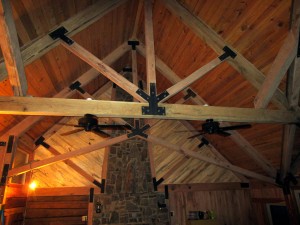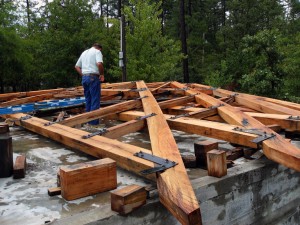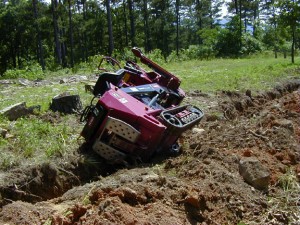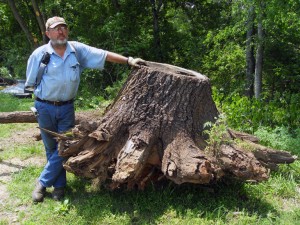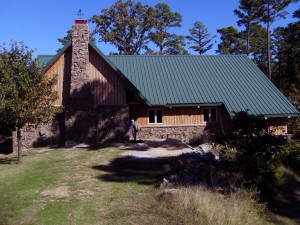After removing several hellish stumps and after pouring a massive concrete pad and waiting a good while until it dried, Tom began putting together columns, beams and trusses. This is not a standard frame; columns are six by six inches with a few eight by eights; columns are bolted to iron brackets buried in the foundation wall (see Fig. 1). Figure 1 steel posts that will be buried in concrete to receive weight from posts. Note the bolt hole that assures the posts will never move even in a tornado!
Beams and tr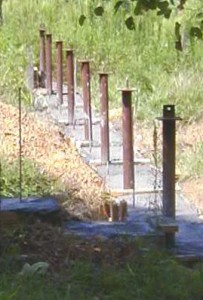 usses are six by eight or ten depending on the load. An intricate truss structure strong enough to support two homes will rise into place with the help of a giant crane.
usses are six by eight or ten depending on the load. An intricate truss structure strong enough to support two homes will rise into place with the help of a giant crane.
When the house is completed, this massive truss and beam will come to life as a work of art. One can watch stress and load move across this superstructure as though it were flowing water – a poetic edifice that induces wonderment.
The entire house is encased in wood: ceilings, walls, nooks and crannies, and floors except for the main open space. The mariner counted at least eight kinds of tree lumber in the house – including a hackberry wall in one of the baths. One doesn’t use hackberry very often because its markings tend not to be stable. Tom pulls it off, however, in a striking pattern.
Anyone who has built a house from scratch knows it is not a one step forward experience. There are one or two steps backward as well.
Tom had just raised the trusses over the kitchen and bedroom on the first floor when a severe Arkansas storm leveled the superstructure – 6×8 inch beams and all. Further, as anyone knows who has taken on a similar project, there are those days… A few photographs to show backward steps:
Finally, one can see the end in sight, er, not 4 or five years – more like 11 and counting. Being a guest in the home is a breathtaking experience mariner is unable to represent in this post. It is a piece of art in the Arkansas backcountry.
Ancient Mariner

